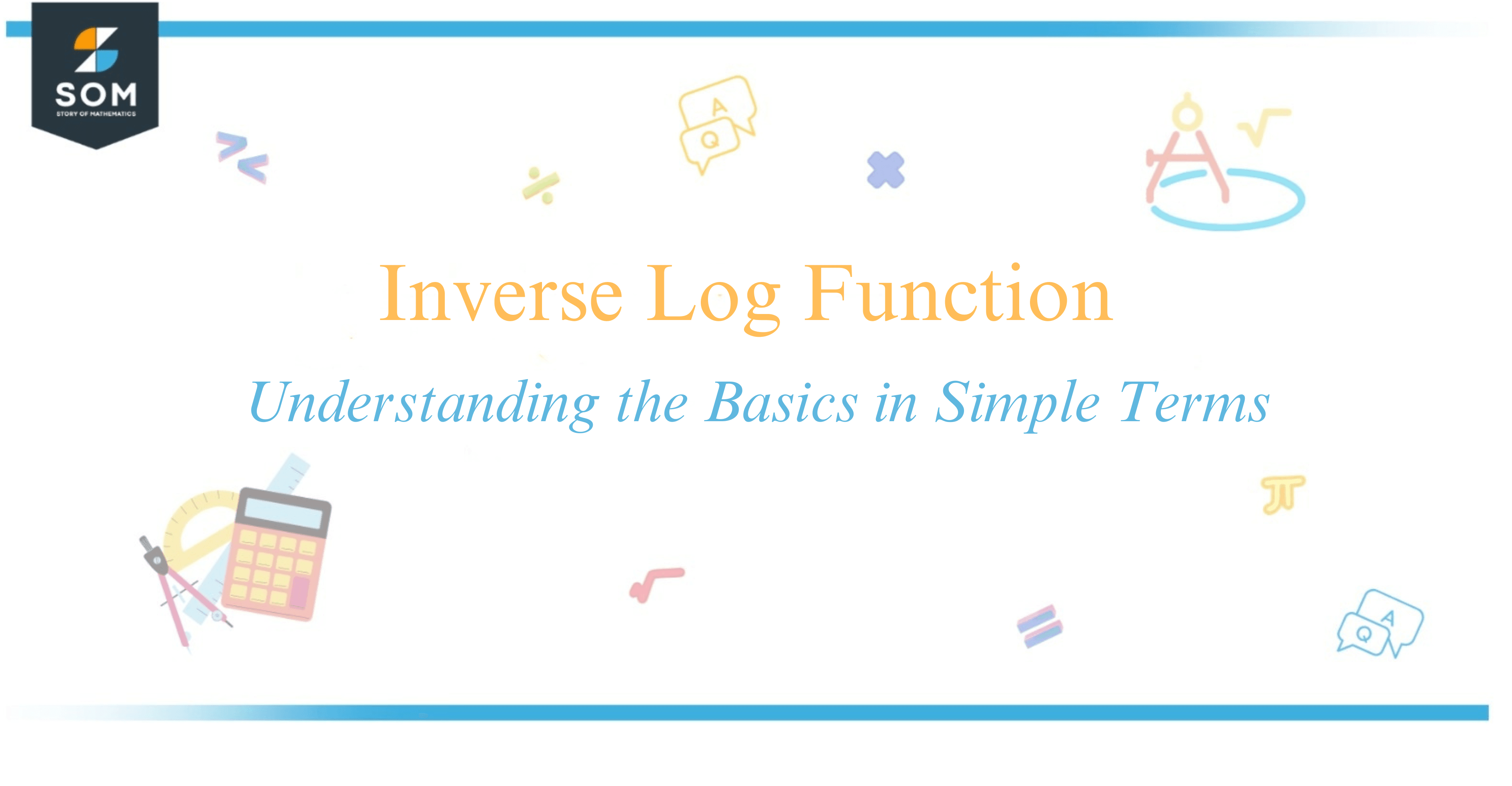 The inverse log function is essentially the operation that reverses the effect of a logarithmic function.
The inverse log function is essentially the operation that reverses the effect of a logarithmic function.
When I deal with mathematical functions, I often find the concept of inverses to be particularly fascinating because it allows me to unravel the effects of a function, bringing me back to the original value before the function was applied.
For example, if I have a function $f(x) = \log_b(x)$, its inverse function would be written as $f^{-1}(y) = b^y$, essentially using the base of the logarithm to re-exponentiate the value.

Understanding the nature and behavior of the inverse log function involves recognizing that it is just the exponential function with the same base as the logarithm.
This reciprocal relationship between logarithmic and exponential functions is a fundamental concept in mathematics. For me, exploring this relationship is not just about solving equations; it offers a deeper insight into the symmetry inherent in mathematics.
The process of finding an inverse function elegantly shows how intertwined operations can dissect complex expressions into their original components. Join me as we explore this intriguing mathematical journey – it’s bound to be enlightening!
Understanding Inverse Logarithmic Functions
When I explore the realm of inverse logarithmic functions, it’s essential to grasp the core concept of inverse functions. An inverse function essentially reverses the action of the original function.
For example, if I have a function $f(x)$, its inverse, denoted as $f^{-1}(x)$, will take the output of $f(x)$ and produce the original input.
In the case of logarithms, understanding their exponential counterparts is key. The function $f(x) = \log_b(x)$ is the inverse of the exponential function $g(x) = b^x$.
This relationship is rooted in the definition of a logarithm: if $y = \log_b(x)$, then by definition $x = b^y$. As a result, I can flip between these two forms using simple rewriting techniques.
When graphing an inverse logarithmic function, start with the graph of the logarithm and then reflect it over the line $y=x$ to find the inverse graph.
The domain and range switch places in an inverse relationship. For a function $y = \log_b(x)$, the domain includes all positive reals and the range is all reals. For its inverse, the domain is all reals while the range is positive reals.
Here’s a table summarizing the logarithm rules:
| Rule | Logarithmic Form | Exponential Form |
|---|---|---|
| Power Rule | $\log_b(m^n) = n \cdot \log_b(m)$ | $b^{n \cdot \log_b(m)} = m^n$ |
| Product Rule | $\log_b(mn) = \log_b(m) + \log_b(n)$ | $b^{\log_b(m) + \log_b(n)} = mn$ |
| Quotient Rule | $\log_b(\frac{m}{n}) = \log_b(m) – \log_b(n)$ | $b^{\log_b(m) – \log_b(n)} = \frac{m}{n}$ |
To simplify equations involving logarithms, I apply these rules. By doing so, not only do I simplify expressions, but I also prepare them for solving or converting to their inverse exponential form.
Remember, understanding the interplay between logarithms and exponentials is crucial in grasping how to work with their inverses.
Practical Applications and Problem Solving
In my experience with inverse functions, they are immensely useful in various real-world scenarios, particularly when dealing with logarithmic functions and converting them into exponential equations.
For instance, when I need to find the time required for an investment to grow to a certain amount, I use the logarithmic function to model the growth, and its inverse function helps me solve for the time directly.
Often, in problems involving decay or growth, like radioactive decay or population growth, the relationship between quantities is exponential. The equation typically looks something like $ N(t) = N_0 \cdot e^{rt}$, where ( N(t) ) represents the quantity at time ( t ), ( N_0 ) the initial quantity, ( r ) the growth or decay rate, and ( e ) the base of the natural logarithm.
When I have the final amount and need to determine the time that has passed, I apply the inverse function of the natural logarithm to rearrange the equation into a solvable form for ( t ).
| Scenario | Function Used | Purpose of Inversion |
|---|---|---|
| Investment | $A = Pe^{rt} $ | Solve for ( t ) to find growth time |
| Population Growth | $P(t) = P_0e^{rt}$ | Determine time for a population to double |
In mathematical problem-solving, isolating the variable of interest is key. When a logarithmic function appears, such as $\log(x – 3) = 2 $, I find the inverse function crucial to isolating ( x ).
By converting the logarithmic equation to an exponential equation, ( x ) becomes readily solvable; in this example, by rewriting it to the form $x – 3 = e^2 $, then solving for ( x ).
Using inverse functions effectively streamlines the problem-solving process, especially when reversing the effect of exponential equations is required. My understanding of this concept has been essential in interpreting data and predicting outcomes across various applications.
Conclusion
In my exploration of inverse logarithmic functions, I’ve pinpointed their fundamental role within mathematics.
Understanding the inverse of a logarithmic function reveals an intimate relationship with exponential functions, where each mirrors the other across the line $y=x$. When I find the inverse, I typically switch $x$ and $y$ in the original function and then solve for the new $y$.
For example, given a logarithmic function like $f(x) = \log_b(x)$, its inverse would be $g(x) = b^x$. This relationship is not just a coincidence; it hinges on the very properties that define logarithms and exponentials.
If I summarize the process of finding an inverse logarithmic function, it involves first setting $y = \log_b(x)$ and then rewriting this in its exponential form to find $x$ as a function of $y$; thus, $x = b^y$.
As I reflect on these concepts, I value the coherence and symmetry they demonstrate within mathematics. They’re not just abstract concepts; they equip me with practical tools for problem-solving in various scientific domains, from computing to engineering.
It’s also remarkable how this inverse relationship applies to the natural logarithm, where I consider the base $e$, and the function $f(x) = \ln(x)$, the inverse of which is the natural exponential function $g(x) = e^x$.
In essence, grasping the concept of inverse logarithmic functions enriches my understanding of logarithms and gives me a deeper appreciation for the architecture of mathematical relationships.
